Table Of Content
- Planning Your Food Storage Strategy
- Starting with the Basics
- Choosing the Right Containers
- Properly Packing Perishables
- Minimizing Food Waste in the Wilderness
- Utilizing Bear-Proof Containers
- Implementing the ‘Hang and Bag’ Technique
- Choosing the Right Containers
- Material Matters
- Size and Capacity
- Seal Tight
- Multi-Functional
- Properly Packing Perishables
- Minimize food waste in the wilderness.
- Utilizing bear-proof containers
- Implementing the ‘Hang and Bag’ Technique
- Minimizing Food Waste in the Wilderness
- Opt for Long-lasting Goods and Fresh Alternatives
- Plan Your Meals Wisely and Portion Control
- Utilizing Bear-Proof Containers
- Why are Bear-Proof Containers Essential?
- Benefits of Bear-Proof Containers
- Tips for Effective Use
- Implementing the ‘Hang and Bag’ Technique
- Why Is the ‘Hang and Bag’ Technique Effective?
- How to Properly Execute the ‘Hang and Bag’ Technique
- Benefits of Using the ‘Hang and Bag’ Technique
- Frequently Asked Questions (FAQs)
Welcome, outdoor enthusiasts and adventurers! As someone who has spent countless hours exploring the wilderness and embracing the beauty of nature, I understand the importance of proper food storage while camping. In the vast and unpredictable wilderness, safe food storage is crucial not only for your nourishment but also for your overall well-being.
When embarking on a camping trip, taking the necessary precautions to ensure your food stays fresh and secure from wildlife is paramount. Implementing effective wilderness food storage practices can prevent unwanted critters from raiding your supplies and causing potential safety hazards.
Various strategies exist to maintain safe food storage in the wilderness, from selecting the right containers to utilizing bear-proof canisters and hanging techniques. Adhering to these guidelines can minimize the risk of attracting animals to your campsite and ultimately protect yourself and the wildlife surrounding you.
Whether you are a seasoned camper or new to outdoor exploration, understanding the significance of proper wilderness food storage is critical to a successful and stress-free camping experience. Join me as we delve into the top wilderness food storage tips to keep your provisions safeguarded and your adventures unforgettable.
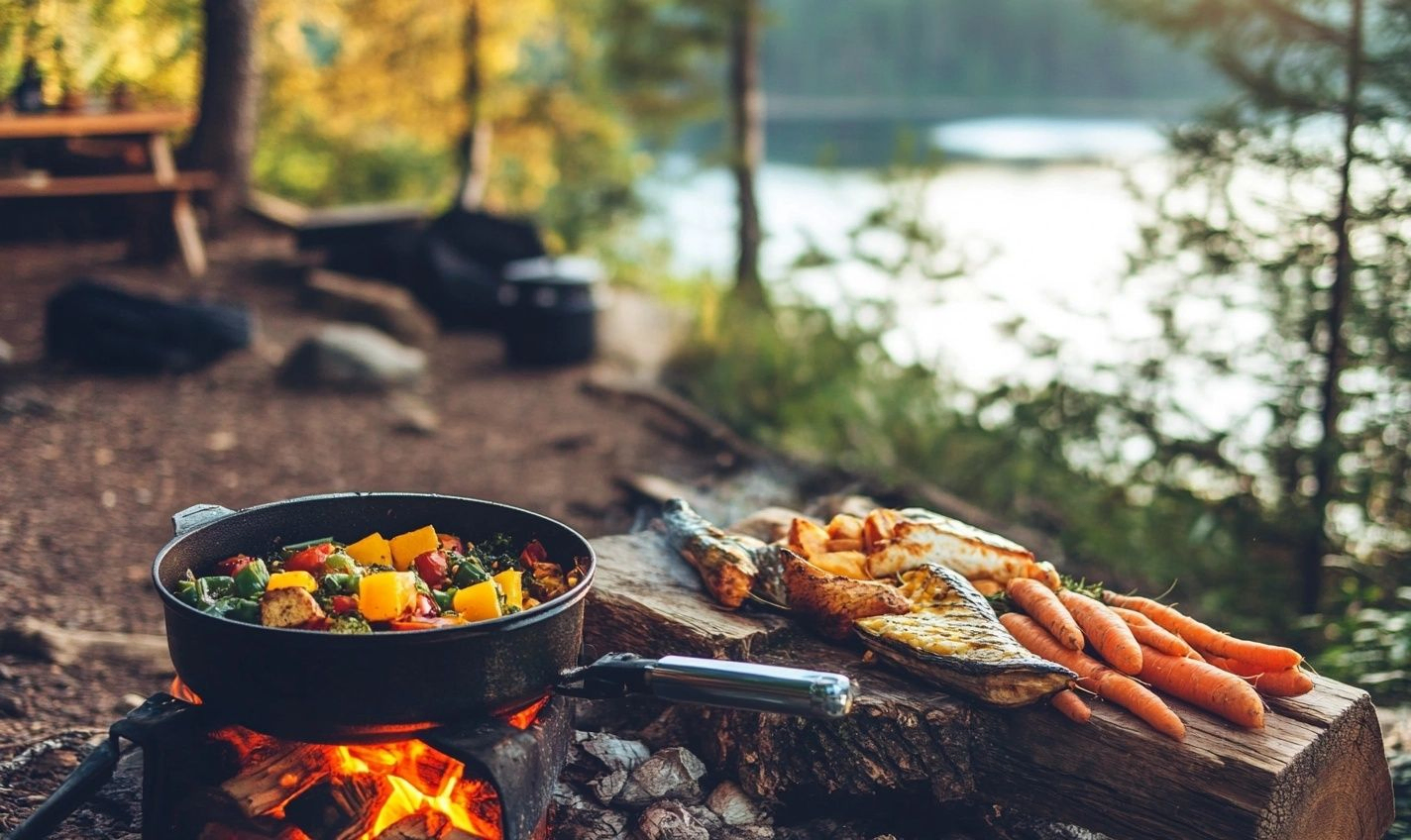
Planning Your Food Storage Strategy
Safe food storage is crucial when heading into the wilderness to ensure your camping trip is problem-free. Sure, you could toss your snacks into your backpack and hope for the best, but where’s the fun in that? Crafting a solid food storage wilderness plan is like creating a treasure map to safeguard your meals from spoilage and unwanted critter visitors.
Starting with the Basics:
Before you embark on your outdoor adventure, consider these critical points for camping food safety:
- Identify your food storage needs based on the length of your trip.
- Take into account the weather conditions you’ll be facing.
- Plan meals that require minimal refrigeration on extended journeys.
Choosing the Right Containers:
It is essential to select the proper containers for your food items. Opt for sturdy, airtight, and critter-proof containers to keep your meals fresh and safe from wildlife intruders.
Properly Packing Perishables:
Ensure perishable items are stored in a cooler with sufficient ice packs to maintain freshness. Pack raw meats separately to prevent cross-contamination and leaks.
Minimizing Food Waste in the Wilderness:
Practice portion control and only bring what you know you’ll consume. Avoid excess packaging, which will end up in the trash and attract unwanted attention from wildlife.
Utilizing Bear-Proof Containers:
When in bear country, investing in bear-proof containers is non-negotiable. These specialized containers are designed to keep food secure and prevent bears from accessing snacks, protecting you and the wildlife.
Implementing the ‘Hang and Bag’ Technique:
One tried and accurate method of wilderness food storage is the ‘Hang and Bag’ technique, where you suspend your food stash high above the ground between trees. This makes it inaccessible to ground-dwelling creatures looking for a midnight snack.
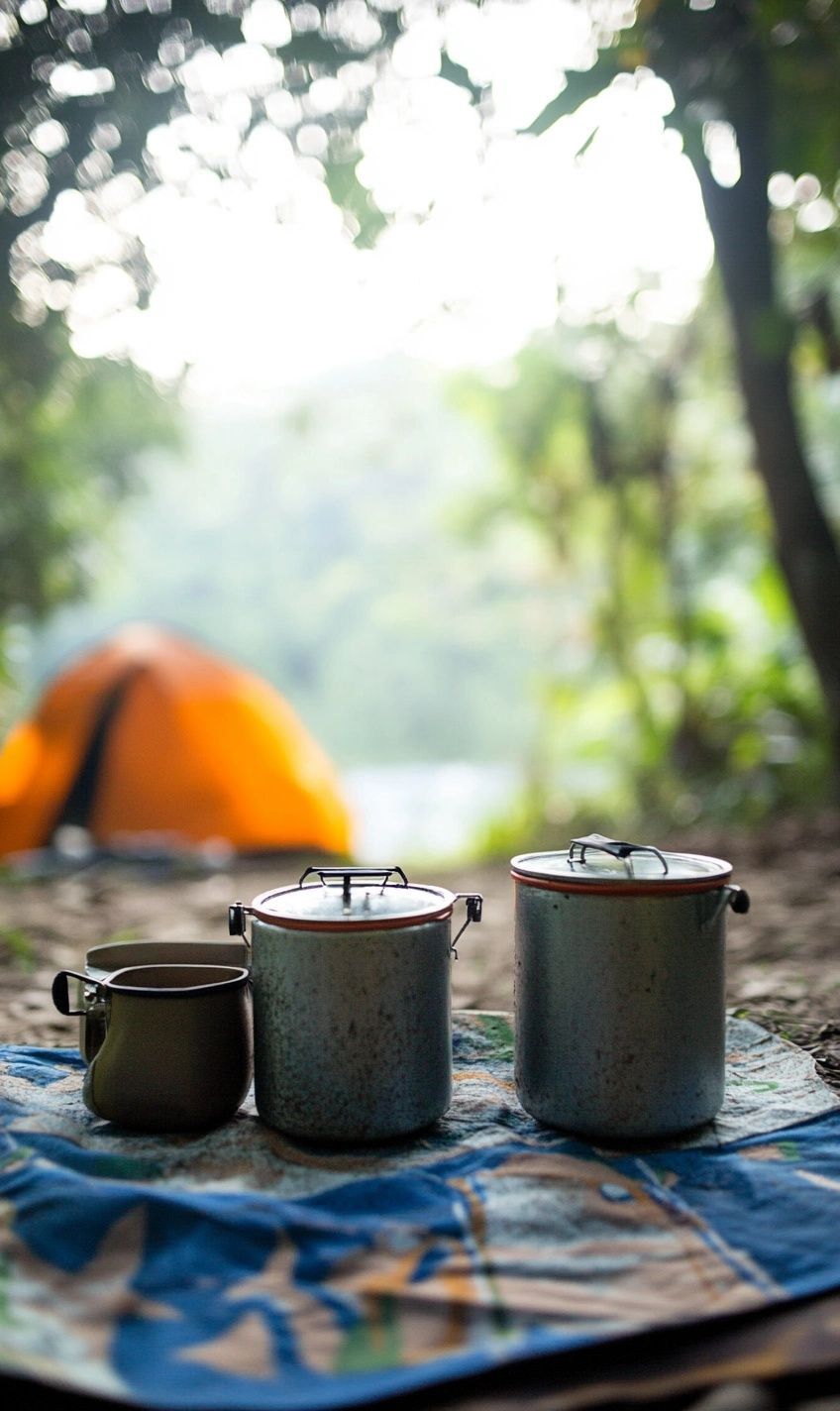
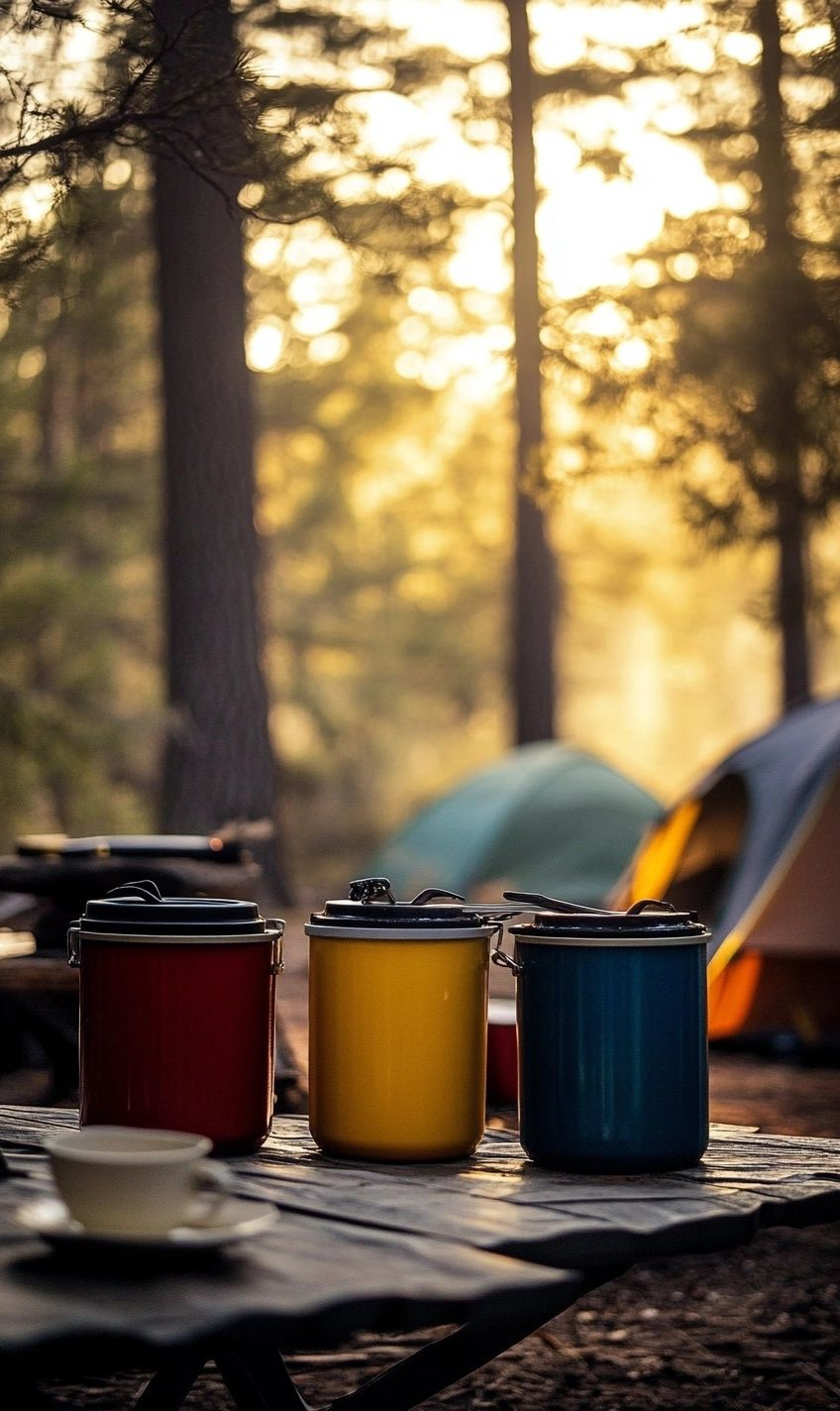
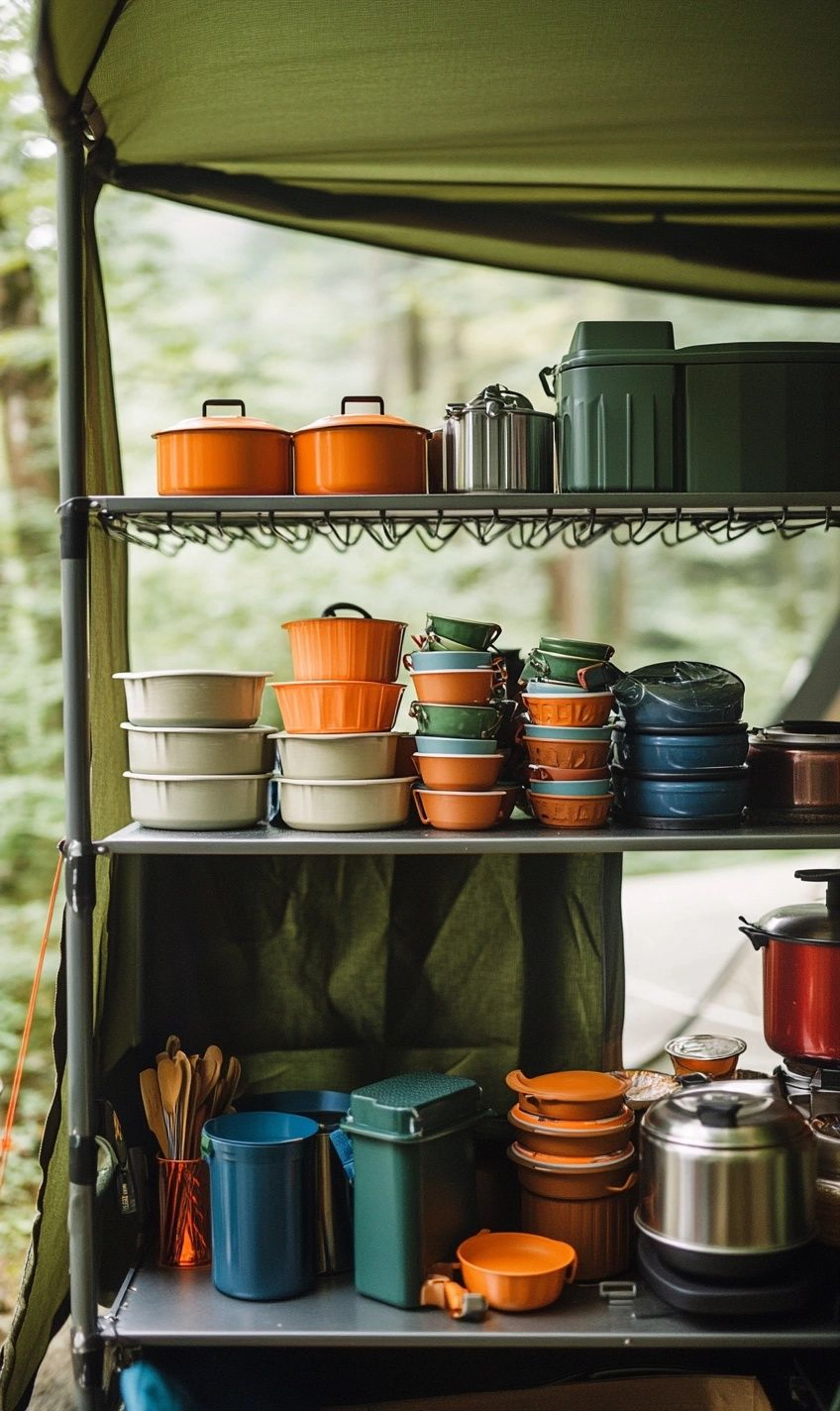
Choosing the Right Containers
Regarding food storage in the wilderness, the type of containers you choose can make a significant difference in keeping your food safe from critters and maintaining its freshness. Let’s dive into some key considerations for selecting the proper containers:
Material Matters:
Opt for durable, lightweight containers that can withstand the rigors of outdoor adventures. Look for BPA-free plastic, stainless steel, or silicone options that are easy to clean and won’t impart any odors or tastes to your food.
Size and Capacity:
When choosing the size and capacity of your containers, consider the length of your trip and the number of people in your group. Compact, stackable containers can help save space in your backpack while still allowing you to pack enough food for your journey.
Seal Tight:
Ensure your containers have secure, airtight seals to prevent any leaks or spills in your pack. Leak-proof containers keep your food fresh and help avoid any messes in your bag.
Multi-Functional:
Look for containers that can serve multiple purposes to maximize their utility in the wilderness. Some options come with dividers or compartments to keep different types of food separate and organized.
Remember, the proper containers are not only about convenience but also play a crucial role in safe food storage and camping food safety in the great outdoors.
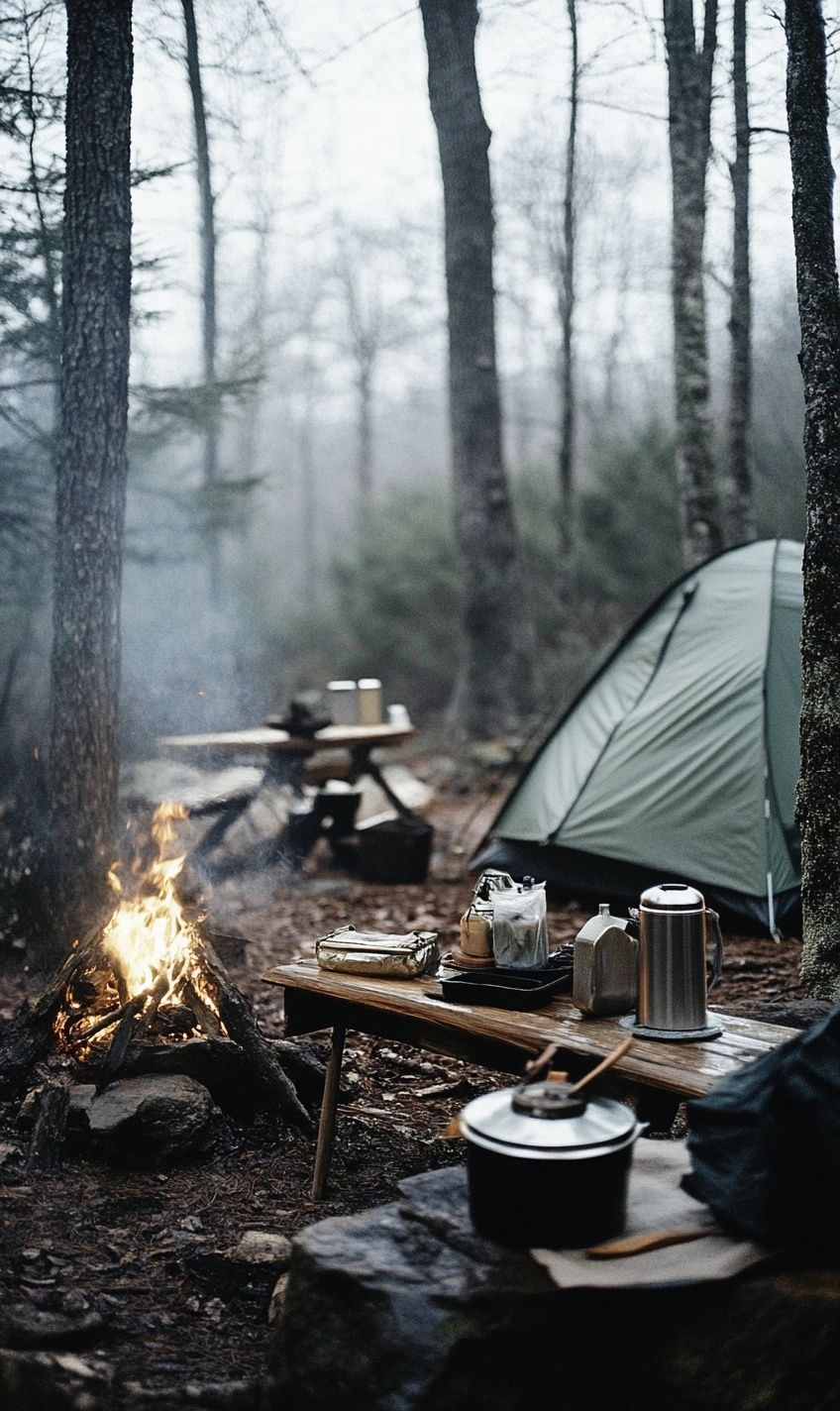
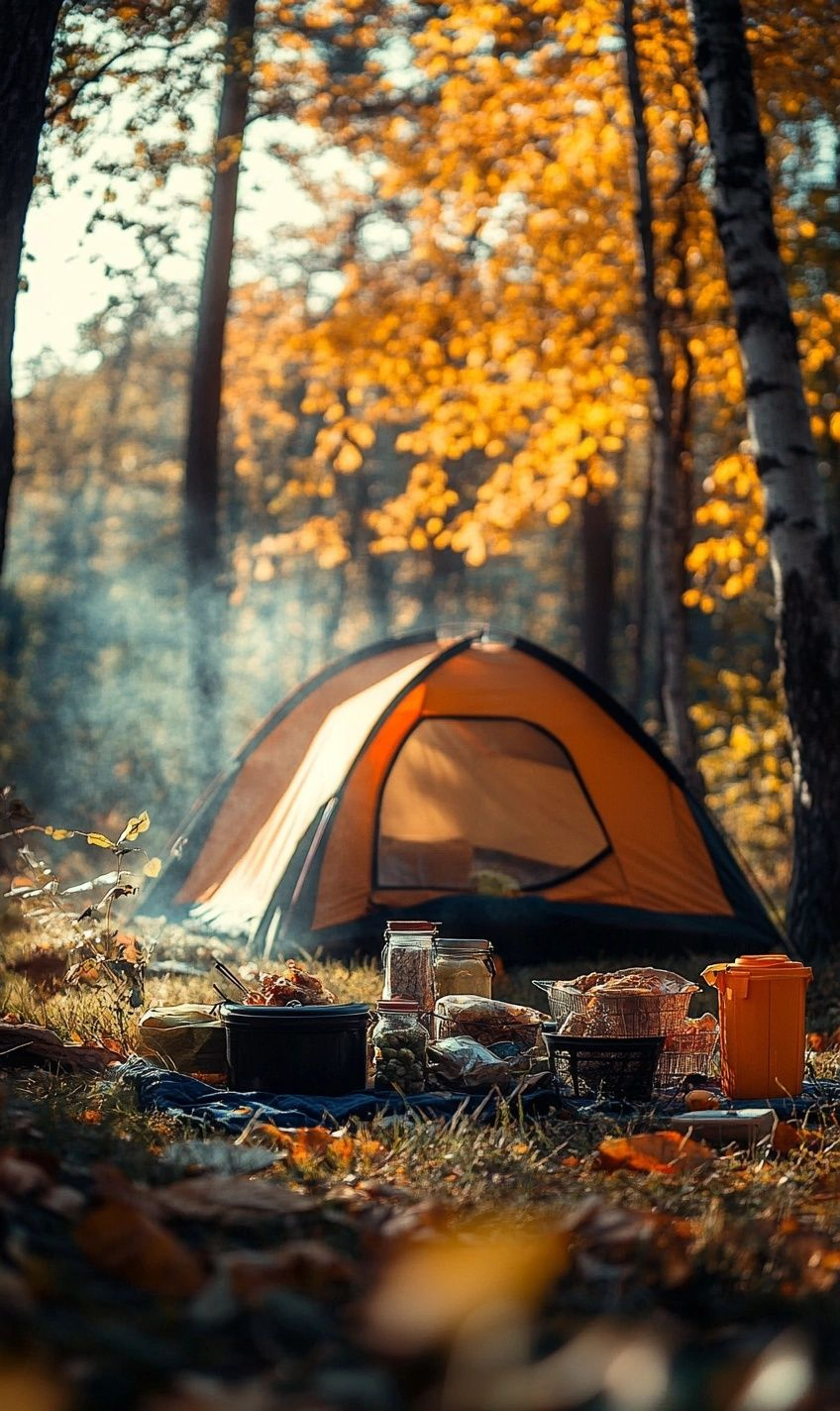
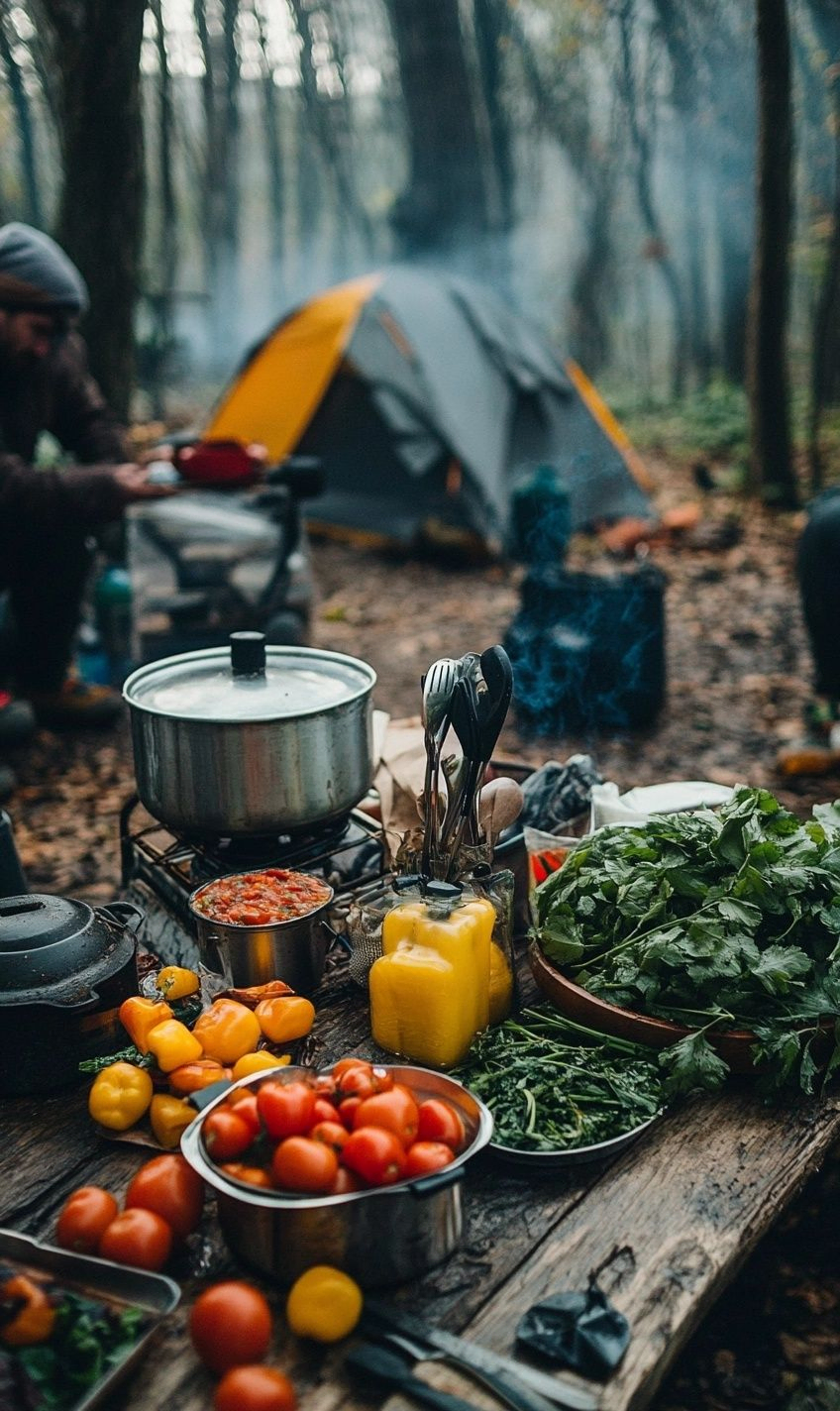
Properly Packing Perishables
When venturing into the wilderness, ensuring safe food storage for perishable items is crucial. You risk spoilage, attracting wildlife, and compromising your health without proper camping food safety measures.
Minimize food waste in the wilderness.
Imagine trekking through the vast wilderness only to discover your carefully packed snacks have gone wrong. What a buzzkill! Safe food storage practices can help you avoid disappointments and maximize your outdoor experience.
Utilizing bear-proof containers
Wild bears roaming your campsite can spell trouble if your food isn’t stored securely. Investing in food storage wilderness solutions like bear-proof containers can keep your supplies safe and deter unwelcome visitors.
Implementing the ‘Hang and Bag’ Technique
Have you heard of the ‘Hang and Bag’ technique for wilderness food storage? This method involves suspending your food supplies high above the ground and away from your campsite. It’s an effective way to keep critters at bay.
Properly packing perishables involves intelligent planning and investing in the right gear. Here are some tips to help you on your way:
- Freeze perishable items before your trip to keep them fresh longer.
- Use airtight containers to prevent moisture and odors from affecting your food.
- Separate raw foods from cooked foods to avoid cross-contamination.
Remember, there’s no room for shortcuts regarding camping food safety. Properly storing food safeguards your supplies and ensures a memorable and worry-free outdoor adventure.
Minimizing Food Waste in the Wilderness
Every morsel of food becomes precious when you’re out in the wilderness. Safe food storage practices are not just about keeping critters away – it’s also about respecting nature and making the most out of your supplies. Here are some tips on how to minimize food waste during your outdoor adventures:
Opt for Long-lasting Goods and Fresh Alternatives
- Consider dehydrated or freeze-dried options
- Pack sturdy fruits like apples and oranges
Plan Your Meals Wisely and Portion Control
- Create a meal plan to avoid overpacking
- Pre-portion snacks to reduce excess consumption
And remember, just because you’re roughing it in the wilderness doesn’t mean you can’t enjoy delicious camping food safely and responsibly. By following these strategies, you can savor your meals while leaving minimal environmental impact.
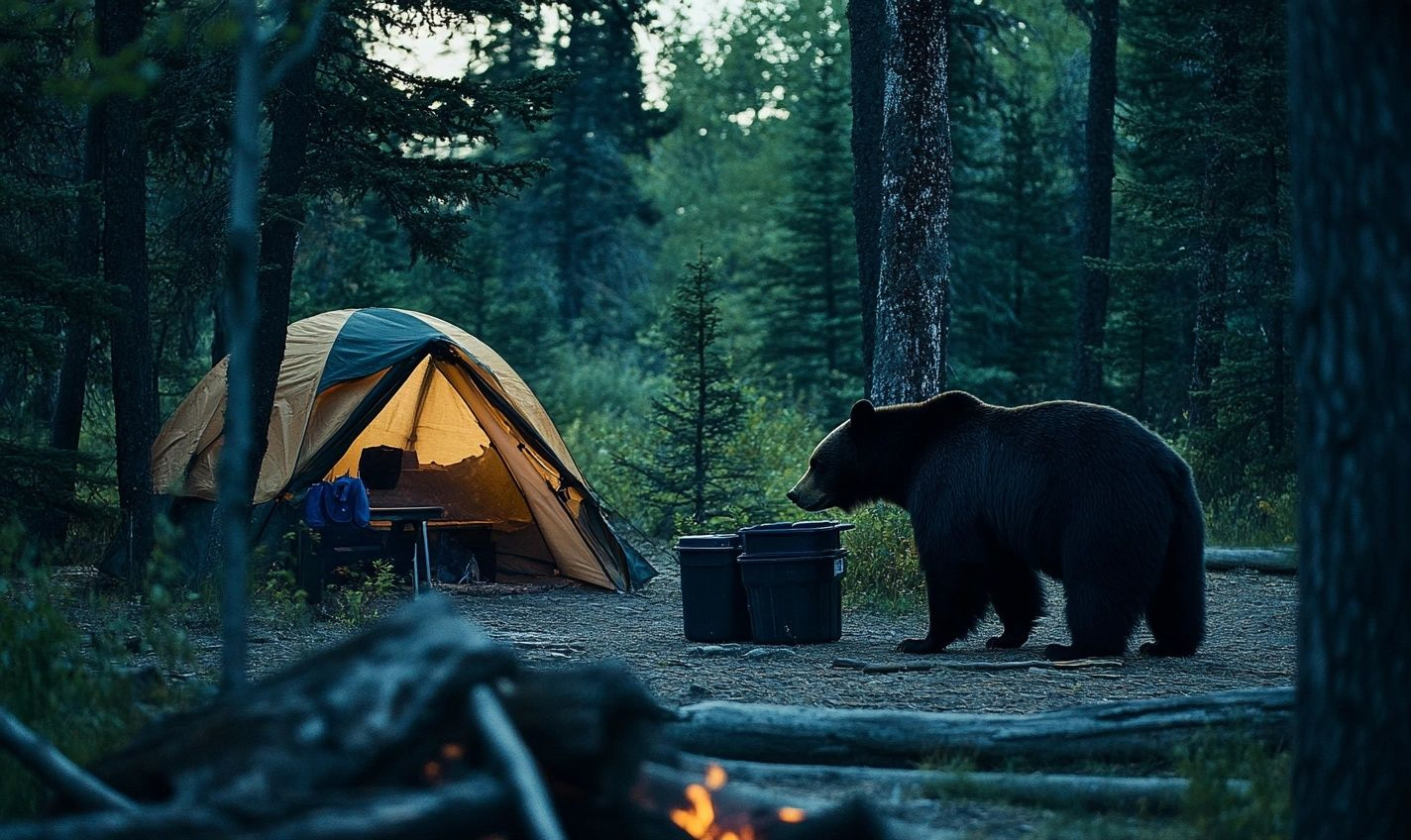
Utilizing Bear-Proof Containers
Bear-proof containers are essential for safe food storage in the wilderness. These specialized containers are designed to keep food secure and out of reach from wildlife, especially bears.
Why are Bear-Proof Containers Essential?
Imagine setting up camp after a long day of hiking, only to wake up to find your food torn apart and scattered by hungry bears. Not only does this pose a safety risk, but it also threatens the well-being of wildlife. That’s where bear-proof containers come in handy.
Benefits of Bear-Proof Containers:
- Prevent wildlife from accessing your food
- Protect both campers and wildlife
- Easy to use and durable
Using bear-proof containers ensures your safety and helps to preserve wildlife’s natural behavior in their habitat.
Tips for Effective Use:
- Always keep the container sealed tightly
- Store the container at least 100 yards away from your campsite
- Do not leave the container unattended
Remember, it’s better to be safe than sorry regarding wilderness food storage. Properly utilizing bear-proof containers can make a significant difference in ensuring a safe and enjoyable camping experience for everyone.

Implementing the ‘Hang and Bag’ Technique
Regarding safe food storage in the wilderness, the ‘Hang and Bag’ technique is a tried-and-true method that can help protect your provisions from critters and keep your campsite secure. This strategy involves hanging your food supplies high up in the air and utilizing bear-resistant bags to keep them out of reach of wildlife.
Why Is the ‘Hang and Bag’ Technique Effective?
Picture this: you’re camping deep in the forest, and the sun sets as you settle in for the night. All is calm until you hear rustling in the bushes. But your food isn’t scattered across the ground; it’s safely suspended in the air in a sturdy bag. That’s the power of the ‘Hang and Bag’ technique.
How to Properly Execute the ‘Hang and Bag’ Technique:
- Choose a sturdy tree branch: Find a robust and high branch away from your sleeping area.
- Use a bear-resistant bag: Invest in a quality bag designed to withstand sharp claws and teeth.
- Securely hang your food: Attach the bag to the branch, ensuring it’s at least 12 feet off the ground and 6 feet away from the trunk.
- Remove any enticing smells: Wipe down containers and cookware before storing them in the bag.
Benefits of Using the ‘Hang and Bag’ Technique:
- Keeps wildlife at bay: Suspending food reduces the risk of attracting animals to your campsite.
- Promotes campsite cleanliness: Say goodbye to pesky critters rummaging through your supplies.
- Ensures food safety: Protect yourself from potential foodborne illnesses by storing your provisions off the ground.
Next time you head into the great outdoors, consider implementing the ‘Hang and Bag’ technique for wilderness food storage, which is both practical and environmentally responsible.
Conclusion
Safe food storage in the wilderness is vital for a successful camping trip. By following these essential food storage tips, you can protect yourself from foodborne illnesses and unwanted encounters with wildlife. Utilize proper containers, bear-proof canisters, and hanging techniques to keep your food secure and out of reach.
Always clean and sanitize your hands before handling food and cooking utensils. Store raw meat separately and cook it thoroughly to avoid cross-contamination. Dispose of food waste properly to avoid attracting animals to your campsite.
Investing in quality food storage solutions, such as lightweight backpacks with designated compartments for food items, can make your camping experience more organized and convenient. Plan your meals ahead of time to avoid overpacking and ensure you have enough food for the duration of your trip.
By prioritizing safe food storage practices, you can enjoy your time in the wilderness without worrying about food safety issues. Embrace these tips as part of your camping routine to create unforgettable outdoor memories while staying safe and prepared in the great outdoors.
Frequently Asked Questions (FAQs)
Q: Why is safe food storage necessary in the wilderness?
A: Safe food storage in the wilderness is crucial to preventing the attraction of wildlife and protecting against potential foodborne illnesses.
Q: What are some essentials for proper wilderness food storage?
A: Essential gear for safe food storage includes bear-resistant containers, odor-proof bags, and hanging systems to keep food out of reach of animals.
Q: How can I ensure my camping food stays safe to eat?
A: To ensure food safety, keep perishable items in a cooler with ice packs, store raw meats separately, and always wash your hands before handling food.
Q: What is the best way to store food to prevent cross-contamination?
A: Store raw meats in leak-proof containers, use separate cutting boards for raw meats and produce, and sanitize utensils after each use to prevent cross-contamination.
Q: Are there any natural methods to keep pests from food while camping?
A: Yes, you can use natural repellents like citronella candles, peppermint oil, or cloves to deter pests from approaching your food storage area.
Q: How should I dispose of food waste in the wilderness?
A: Properly dispose of food waste by packing all trash, including food scraps, in sealed bags to avoid attracting wildlife and leave no trace of your presence.







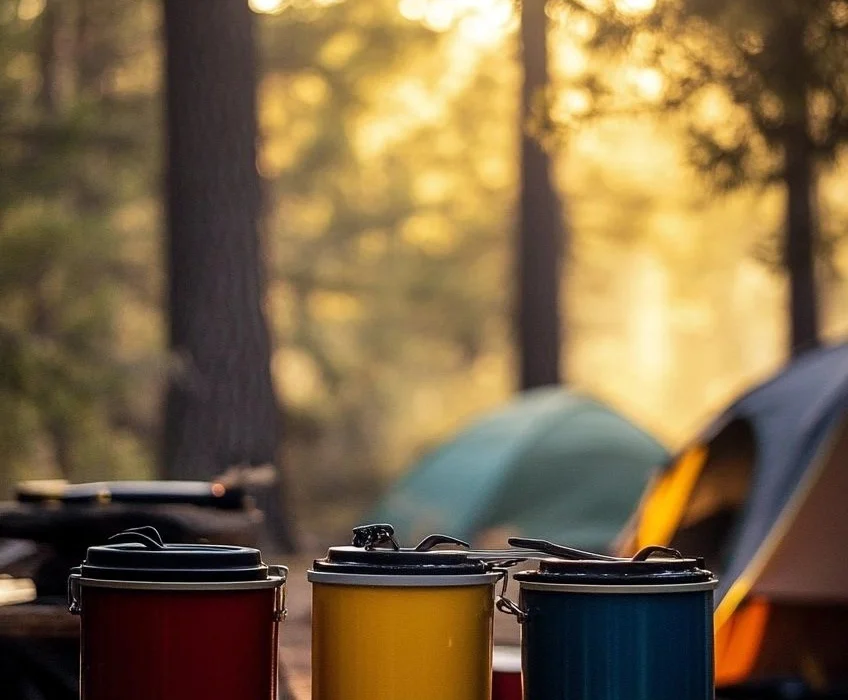


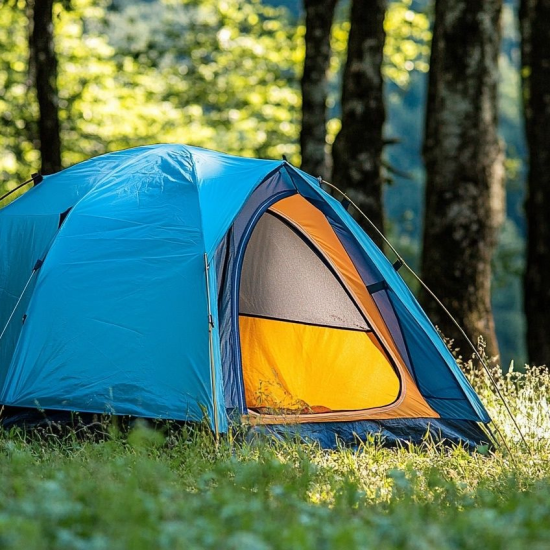
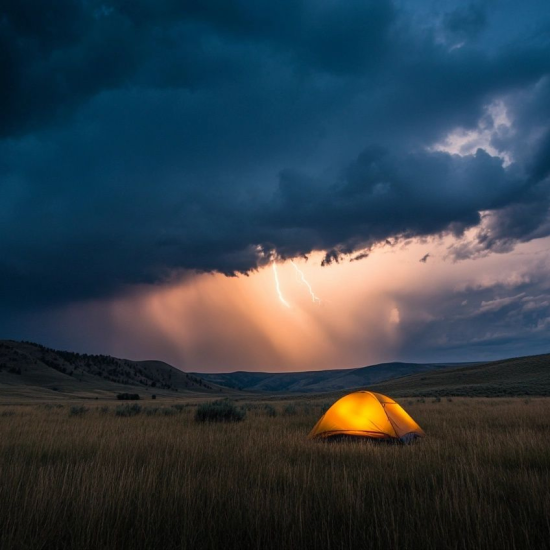
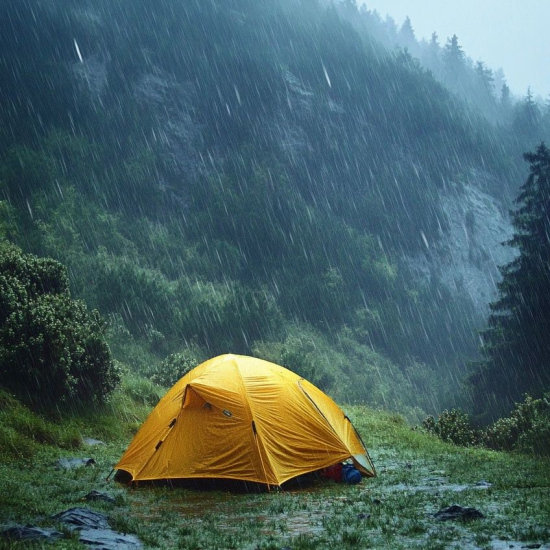
No Comment! Be the first one.